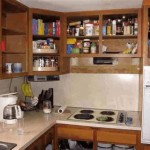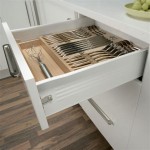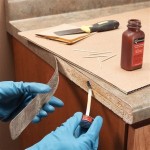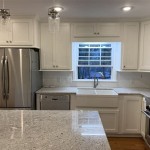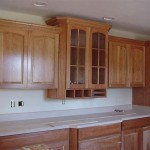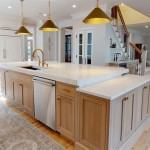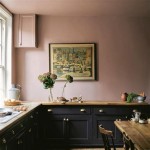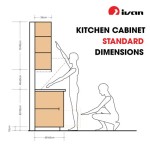Painted and Glazed Kitchen Cabinets
Painted and glazed kitchen cabinets offer a unique blend of color and texture, creating a customized look that ranges from subtle elegance to rustic charm. This finishing technique involves applying a glaze over a base coat of paint, allowing homeowners to achieve a depth and dimension not possible with paint alone. Understanding the process, benefits, and various design options associated with painted and glazed cabinetry can help homeowners make informed decisions when updating their kitchens.
The Painting and Glazing Process
The process of painting and glazing kitchen cabinets involves several key steps:
- Surface Preparation: Cabinets are thoroughly cleaned and sanded to ensure proper adhesion of the paint.
- Primer Application: A high-quality primer is applied to create a uniform base for the paint.
- Base Coat Application: The chosen paint color is applied in multiple thin coats, allowing each coat to dry completely.
- Glaze Application: The glaze, which can be tinted or clear, is applied over the dried base coat.
- Glaze Manipulation: Various techniques, such as wiping, brushing, or rag rolling, are used to manipulate the glaze and create the desired effect.
- Sealing: A protective sealant is applied to protect the finish and enhance durability.
Benefits of Painted and Glazed Cabinets
Opting for painted and glazed kitchen cabinets offers several advantages:
- Enhanced Aesthetics: Glazing adds depth and character, transforming ordinary cabinets into focal points.
- Customization Options: A wide range of glaze colors and application techniques allows for highly personalized designs.
- Durability: When properly sealed, glazed cabinets offer excellent resistance to wear and tear.
- Increased Value: The custom look of painted and glazed cabinets can enhance the overall value of a home.
Choosing the Right Glaze
Selecting the appropriate glaze is crucial for achieving the desired effect. Factors to consider include:
- Color: Glaze colors can range from subtle tints that enhance the base coat to contrasting hues that create a dramatic effect.
- Opacity: The opacity of the glaze determines how much of the base coat shows through, impacting the overall look.
- Finish: Glazes are available in various finishes, from matte to high-gloss.
Glazing Techniques
Different glazing techniques produce distinct visual effects:
- Wiping: Excess glaze is wiped away to reveal the base coat, creating a subtle, antique look.
- Brushing: Using a brush to apply and manipulate the glaze allows for more control and detailed designs.
- Rag Rolling: A crumpled rag is used to apply and remove glaze, resulting in a textured, layered appearance.
- Crackling: A crackle medium is applied before the glaze, creating a network of fine cracks for a vintage effect.
Design Considerations for Glazed Cabinets
Integrating glazed cabinets into a kitchen design requires careful consideration:
- Cabinet Style: Glazing complements various cabinet styles, from traditional to contemporary.
- Kitchen Size: Darker glazes can make a small kitchen feel smaller, while lighter glazes can brighten the space.
- Lighting: Proper lighting enhances the depth and dimension created by glazing.
- Existing Decor: The glaze color should complement the existing color palette and style of the kitchen.
Maintaining Painted and Glazed Cabinets
Proper maintenance ensures the longevity of painted and glazed cabinets:
- Regular Cleaning: Use a soft cloth and mild detergent to clean the cabinets, avoiding abrasive cleaners.
- Avoid Excessive Moisture: Wipe up spills immediately to prevent damage to the finish.
- Touch-Ups: Minor scratches or chips can be repaired with touch-up paint and glaze.
Cost of Painted and Glazed Cabinets
The cost of painted and glazed kitchen cabinets varies based on several factors:
- Cabinet Material: The type of wood used for the cabinets impacts the overall cost.
- Glaze Type: Specialty glazes can be more expensive than standard options.
- Labor Costs: The complexity of the glazing technique and the experience of the painter influence labor costs.
- Project Size: The number of cabinets to be painted and glazed directly affects the total cost.
DIY vs. Professional Painting and Glazing
Homeowners can choose to undertake the painting and glazing process themselves or hire a professional. DIY offers cost savings but requires time, skill, and patience. Professional painters possess the expertise and equipment to achieve high-quality results, ensuring a flawless and durable finish.

How To Glaze Kitchen Cabinets

How To Glaze Kitchen Cabinets Diyer S Guide Bob Vila

Rescuing And Reviving A Glazed Distressed Kitchen Bella Tucker

Porchswings N Honeysuckle Paint And Glaze Cabinet Tutorial New Kitchen Cabinets Renovation Glazed

How To Glaze Cabinets At Home With The Barkers

How To Glaze Cabinets At Home With The Barkers

3 Great Reasons To Glaze Your Kitchen Cabinets

How To Glaze Cabinets At Home With The Barkers

Glazed Cabinets Add Traditional Depth Dimension To Any Kitchen

How To Glaze Kitchen Cabinets Diyer S Guide Bob Vila
Related Posts

